Designing Wearables That Work: Why Wearable PCB Layout Matters More Than Ever
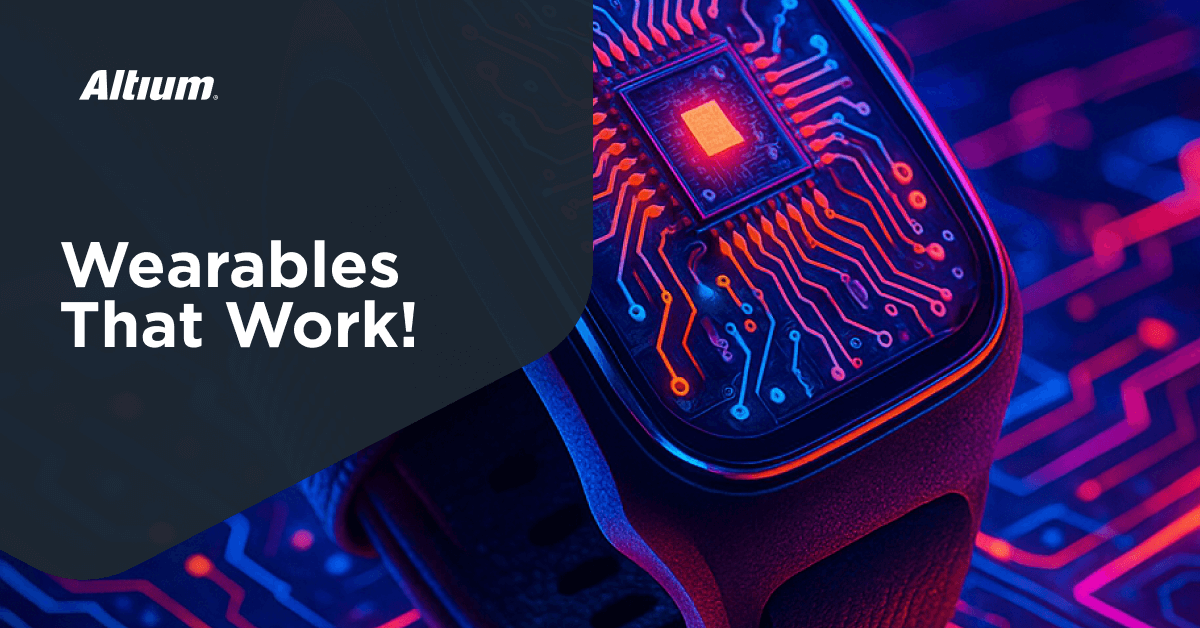
Wearables continue to get smaller and smarter, delivering seamless experiences that consumers are beginning to adopt like second nature. And while a skin patch, ring, or pair of sunglasses may appear simple, inside there’s a fully integrated wearable PCB system that senses, computes, and communicates while withstanding motion, moisture, and everyday use. In this type of product, PCB layout determines whether a design will work as intended.
The best of today’s wearable electronics designs are driven by thoughtful layout decisions that account for form, function, and the physical realities of the human body. As these devices evolve, layout becomes the driver of performance, power efficiency, and wearable PCB reliability.
What Makes Wearable PCB Design Different
Designing a PCB for wearable tech begins with constraints that traditional board formats never encounter. The enclosure may be curved, flexible, or multi-layered. The board may need to route signals around a battery, fit within a textile seam, or fold to follow the motion of a joint.
Traditionally, wearables were limited by the flat, rigid PCB. But technologies like in-mold structural electronics (IMSE), printed electronics and 3D-MID (Three-Dimensional Mechatronic Integrated Devices) now allow circuits to conform to the body.
Materials and mechanical constraints for wearables define the layout envelope. Rigid-flex designs, embedded components, and multi-board assemblies are increasingly common. Engineers need to think in three dimensions and understand how their layout choices intersect with comfort, motion, and environmental stress.
Placement, grounding, and shielding are influenced by both circuit logic and the device’s intended use, including how it will be worn, handled, and charged. These form-driven design choices are explored further in Wearable Design: Why Fashion, Function and PCB Form Factor Matter, which examines how user experience and aesthetic considerations influence layout constraints in wearables.
Collaborative PCB Layout for Wearable Devices Across Disciplines
Wearable products are inherently cross-disciplinary, as the wearable PCB layout must integrate electrical, mechanical, RF, and industrial design requirements. For example, a sensor’s location might dictate board shape, while a ground plane decision could affect enclosure bonding or RF tuning. Layout becomes the shared space where these inputs converge and take physical form.
Effective collaboration depends upon tools that bring cross-functional teams into the same design space. Layout engineers benefit from environments where electrical, mechanical, and RF teams work with shared context and real-time visibility. Altium solutions are built for this, helping teams align constraints and move quickly through the multidisciplinary PCB design process.
The Real-World Risks of Poor Wearable PCB Layout
In wearable electronic devices, there is little tolerance for layout decisions made in isolation from system context. A misplaced trace can result in EMI that distorts a health signal. A poorly routed antenna path can reduce connection range or increase regulatory risk. Heat buildup near skin contact zones can create safety issues, and tight analog-digital coupling may introduce sensor drift that cannot be fixed with calibration.
These issues do not appear on a schematic. They are consequences of layout geometry, PCB stackup design, and spatial relationships. Layout engineers are responsible for resolving physical conflicts between high-performance electronics and human-centered design. That responsibility starts with smart spatial planning and disciplined routing.
High-Speed Routing and Impedance Control in Wearable PCB Layouts
Wearables devices with high-speed signals often rely on high-speed interfaces to transfer sensor data, manage wireless communication, or support real-time user feedback. As signal speeds rise and board sizes shrink, the margin for error becomes increasingly narrow. Layout engineers manage impedance across every signal path. This is especially critical in flex or curved regions, where material properties and geometry can subtly shift. Controlled impedance routing becomes essential, and so does return path continuity.
In this environment, differential pairs are tightly matched and shielded from interference. Stub lengths, trace widths, and spacing must adhere to exacting constraints to preserve timing and minimize crosstalk. Routing through stacked connectors or around dense components demands careful planning. With space at a premium, signal integrity in wearables depends on the layout engineer’s precision with constraint-driven design and simulation.
Wearable PCB Manufacturing and Testability Considerations
From test point placement to probe access and documentation, layout choices shape both manufacturability in wearable electronics and PCB testability from the outset. In flex and hybrid boards, routing must support not only electrical function, but also mechanical durability, assembly precision, and inspection under motion or strain. Surface-mount pads and bendable regions must be accessible for fixture-based testing without compromising the board’s flexibility.
As component densities rise and board outlines become more complex, layout engineers must define features that PCB fabrication for wearables and testing partners can build and validate with confidence. That means controlling pad size and spacing, preventing test shadowing, and embedding helpful cues directly into silkscreen and mechanical layers. Each trace, pad, and stackup layer should be placed with the wearable device production process in mind, from soldering to inspection to yield analysis.
Power Distribution Strategy for Miniaturized Wearable PCB Designs
In wearable devices, wearable power management must remain stable, efficient, and free of interference, all within tight physical and thermal limits. Layout plays a central role in making that happen. The IR drop is reduced with optimized trace width and routing, especially for sensor arrays and radio modules with variable current demands.
A well-planned power layout separates noisy digital blocks from sensitive analog domains and places decoupling capacitors close enough to support fast switching. Ground plane designs in wearables must be continuous and free of fractures that degrade performance. A disciplined power layout ensures energy reaches its destination cleanly without adding bulk or compromising design.
Stacking and Layer Planning in Rigid-Flex PCB Design for Wearables
Rigid-flex architecture opens up new possibilities for wearable PCB design, but also introduces challenges that begin at the stackup level. Engineers define bend regions, manage stress across zones, and route signals to meet both mechanical and electrical requirements. Components near bend zones can create fracture risks, and vias in transition areas require careful clearance and alignment.
To prevent microcracking and ensure long-term reliability, signal layers are typically routed away from outer flex layers, and adhesives must match the flex region’s mechanical behavior and thermal expansion characteristics. A well-executed stackup supports the reliability of flexible wearable electronics and extends the product’s functional lifespan.
See Integrating Flexible and Rigid-Flex PCBs in IoT and Wearables for a detailed overview of design challenges and solutions for rigid-flex PCBs in compact IoT and wearable devices, or watch How To Use Modern Rigid-Flex Substrates, a technical webinar offering step-by-step guidance on creating flex regions, contour routing, and material choices.
If It Fits and Functions, It Started with Wearable PCB Layout Design
In products where space is tight, tolerance is critical, and the human body is the environment, layout engineers carry a unique responsibility. Every layout decision, from rotation to isolation, shapes how the product performs and holds up in the real world, especially in PCB design for wearable devices where size and reliability intersect.
For teams designing the next generation of wearable electronic devices, Altium solutions enable smarter workflows, faster decisions, and more confident collaboration. When a wearable works as intended and holds up in the real world, good layout made it possible.

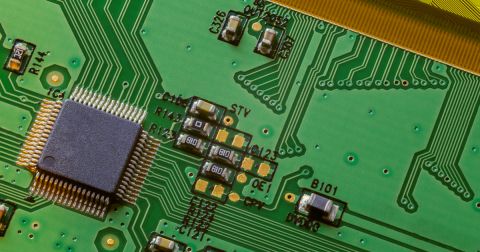
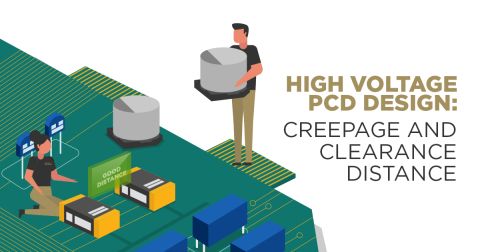


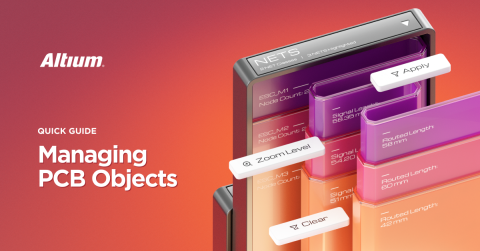
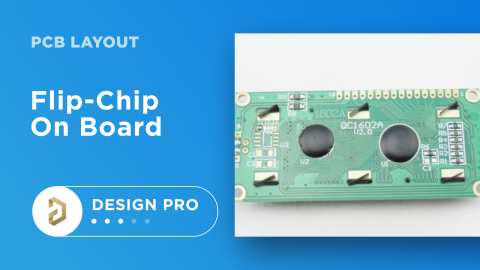

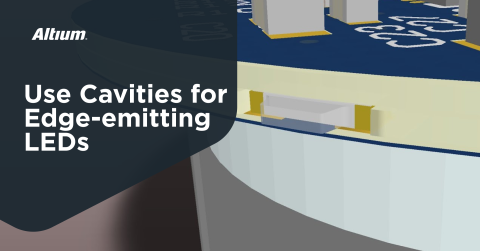
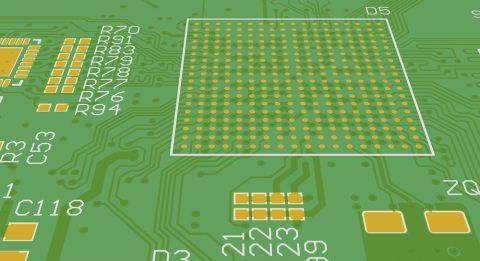
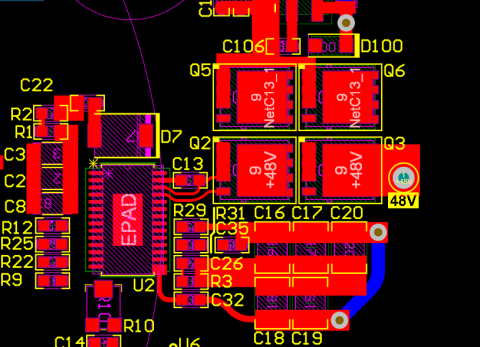

 Back
Back